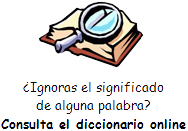Bilingual Teachers in Short Supply
Across America
About 10 percent of public school students in the United States are
English language learners. In some states, that number is much higher.
In California, for example, 38 percent of students enter the public
school system as English learners. Overall, about 21 percent of
California public school students are considered English learners.
For years, these students had few chances to receive a bilingual
education or take special classes for English learners. In 1998,
California voters passed a measure that ended many programs for English
language learners, in favor of English-only education. The measure was
known as Proposition 227, or the “English in Public Schools” measure.
In November 2016, that measure was overturned. Today, California public
schools are working to bring in and expand bilingual offerings.
However, progress has been slow. School systems across the state say
they simply do not have enough qualified, bilingual educators to serve
their students.
California is not alone in this struggle. Thirty other states and the
District of Columbia report shortages of teachers in the areas of
bilingual instruction and English as a Second Language.
Observers fear a continued shortage will further harm English learners’
chances for a meaningful education.
But there are national and local efforts
underway to find solutions. We talk about those today.
First, we will discuss the population involved.
America’s English language learners
An estimated five million students in the country are considered English
language learners, or ELLs. Such students are the fast-growing group in
U.S. public schools.
Last month, the Council of Great City Schools published its latest
findings on English learners. The report looked at several conditions
for English learners attending public schools in 74 major U.S. cities.
In its report, the council defines English learners as between the ages
of 3 and 21; whose native language is not English; and whose
difficulties in reading, speaking and understanding English are enough
to keep them from having success in the classroom.
The most commonly spoken languages among ELLs in America are Spanish,
Arabic, Chinese, Haitian Creole and Vietnamese. Speakers of those five
languages make up 92 percent of all ELLs included in the council’s
report.
Methods for teaching ELLs
English learners can enroll in one of several kinds of programs,
depending on where they live. There are transitional programs, in which
students are mostly taught in their native language but also receive
English training. And there are structured programs, which offer
students almost all classroom teaching in English. These kinds of
programs do not always permit students to become skilled at writing and
reading in their own language, however.
There are also so-called dual-language immersion programs. These
programs offer instruction in two languages -- English and another
language. Research has shown that English learners do best in
dual-language programs, especially if the second language is their own
mother tongue.
This is not a usual education model in America’s public schools,
however. A 2017 study by the Rand corporation estimated that the US has
between 1,000 and 2,000 dual language immersion programs. By comparison,
the United States has over 130,000 schools serving kindergarten through
12th-grade students.
The lack of high-quality bilingual programs is clear when considering
student outcomes. Nationally, about 83 percent of students complete
their high school education. But the graduation rate among English
learners is far lower – 65 percent.
The case in California
Before Proposition 227 passed in 1998, 30 percent of California’s 1.3
million English learners took part in bilingual programs. But in the
years after, only 5 percent were able to take part in such programs.
This information comes from a report released last month by Education
Next.
Since the proposition was repealed, schools in California have been
hoping to bring back bilingual programs. A 2017 public opinion study
found that 58 percent of school districts in the state had plans to add
or expand bilingual programs.
However, 86 percent of those districts said the shortage of bilingual
teachers was slowing those plans.
Experts and school administrators told Education Next that school
systems in California are “stealing each other’s teachers.” To compete,
many systems in the state now offer extra money for teachers with
bilingual skills.
More districts “growing” their own teachers
School systems across the country sometimes look for bilingual educators
internationally. But education experts and policy organizations say
there are ways for states to find and train new teachers in their local
communities.
One method involves “growing” more educators within their community.
This is called “grow your own” or GYO.
New America is a policy organization based in Washington, D.C. Its
Education Policy team carries out research meant to strengthen America’s
educational system.
It says "grow your own" programs can both fix teacher shortages in
states and increase the racial and linguistic diversity among teachers.
It adds that local teacher candidates are more likely than overseas
teachers to stay in the system. This saves schools money and resources
over time.
This spring, New America released a list of "grow your own" guidelines
for schools and states to follow. It advised states to offer a mix of
ways for bilingual teacher candidates to receive necessary
certifications. It also suggested training local candidates even if they
do not have a college degree.
Reaching English Learners Act
Congressional lawmakers are also among those looking for ways to find
and train bilingual teacher candidates.
Last year, several lawmakers introduced a bill meant to address the
shortage of educators qualified to teach English learners. The bill is
called the “Reaching English Language Learners Act.”
If passed, the bill would give grants to colleges and universities to
support the development of the next generation of ELL educators. The
grant money would go toward developing programs meant to make sure
teacher candidates have the “knowledge and skills necessary” to
effectively teach English learners.
Jim Langevin was among the lawmakers who proposed the bill to the House
of Representatives, first in 2018 and again in February. Langevin is a
Democratic Party congressman from Rhode Island. The bill has received
support from Democrats and Republicans in both houses of Congress.
Langevin said the bill would provide critical resources to help English
learners and their teachers. |
![]() ).
Utiliza el botón derecho del ratón y "guardar enlace" para descargar el
fichero a tu PC, tablet, Smartphone, etc.
).
Utiliza el botón derecho del ratón y "guardar enlace" para descargar el
fichero a tu PC, tablet, Smartphone, etc.![]() Escucha el audio
Escucha el audio



